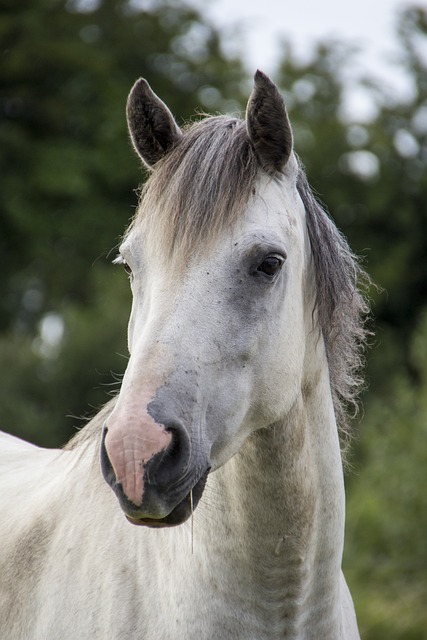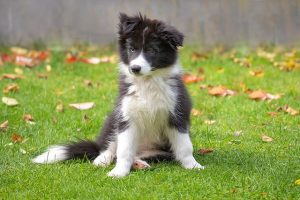Equine shivers is a disorder resulting from abnormal hind limb nerve malfunction that causes involuntary and progressive muscle tremors, weakness, and gait impairment in horses. Also called “stringhalt” in some regions, equine shivers worsen over time, negatively impacting a horse’s mobility, balance, coordination, comfort, rideability, usefulness, and quality of life.
This complex condition with no known cure warrants close monitoring and individually tailored treatment plans to slow symptom advancement as much as possible.
Table of Contents
Causes and Risk Factors
While research continues investigating the underlying trigger mechanisms of shivers in horses, the exact causes remain unknown. Suspected or confirmed contributing factors include:
Genetic Mutations
Certain genetic lines of heavy draft horse breeds like Clydesdales, Percherons, and Belgians have markedly higher occurrence rates of shivers in horses compared to other breeds. For example, an SH3 genetic domain mutation was discovered in 2006 and carried by a high percentage of shivers-positive Percherons and Belgians. This mutation appears linked to nerve damage and hind limb muscle tremors.
Selective breeding and genetic testing to reduce the chances of passing along contributing genes may help lower future shiver cases in susceptible bloodlines. Further genetic research across additional breeds could reveal more mutations tied to higher incidence risk.
Nutritional Deficiencies
Chronic dietary deficiencies in nutrients like vitamin E, selenium, copper, and other vitamins and minerals over time likely significantly impair nervous system health. Ensuring all horses receive properly balanced daily nutrition supports nervous system needs and may protect against the onset of equine shivers.
Exposure to Toxins
Environmental toxins like lead, mercury, arsenic, and cadmium absorbed by horses could contribute to shivers by accumulating in the body and damaging nerves. Possible toxin sources include polluted pastures, contaminated feeds, herbicides/pesticides, chemical-treated wood chewing, and more. Routinely testing pasture and feed quality while minimizing toxin exposure reduces risks.
Age of Onset
Based on documented cases, shivers typically first appear in horses between 4 and 15 years old, with an average age of around 10. The condition rarely develops in young or more advanced horses over 18 years old. It is progressive, so even mild cases will worsen annually without proper management. Lifelong tailored care is key.
Gender
Males tend to acquire shivers more often than females for reasons that have not yet been pinpointed. Castrated males also have elevated incidence numbers compared to their intact counterparts, indicating that hormones could indirectly affect nerve conductivity. More studies on gender influence factors are needed.
High Stress Levels
While not a direct cause, severe or chronic stress is hypothesized to contribute secondarily by triggering chain reactions that could impair overall nervous system functionality, circulation, cell oxygenation, and musculoskeletal system coordination.
Reducing environmental stressors while also building stress resilience through nutrition and training bolsters overall wellness and may help minimize the severity of shivers in the long term.
Early Symptoms and Clinical Signs
Equine caretakers, riders, and trainers often first notice mild symptoms when working or exercising high-stepping horses with shivers – particularly backing up, traveling downhill, tight circling, or attempting quick directional changes or sudden stop-starts. Early signs to watch closely for include:
Visible Muscle Fasciculations
Mild to moderate involuntary twitching, rippling, trembling, quivering, shaking, or general lack of solidity in the hindquarters, hip, thigh, gaskin, or buttock muscle groups. It initially impacts just one hind leg but often spreads to both sides over time. The degree of tremors varies individually from subtle to quite pronounced.
Exaggerated Leg Lifting
A visibly abnormally high hip hike and exaggerated upward back leg thrust occur when moving at faster paces, like trotting or cantering, as the horse tries compensating to clear the dragging, uncoordinated limb(s) forcibly. Stride length shortens.
Hoof Scuffing
Audible scuffing, scraping, or dragging sounds arise as the hind hoof(s) fail to fully clear the ground before striding forward, causing the toe to catch and ricochet off arena footing or other hard surfaces. This may leave scrape patterns.
Loss of Hindquarters Engagement
The hind-end motor dysfunction becomes especially noticeable under saddle when asking the horse for collected gaits, lateral movements, flying lead changes, rollbacks, sliding stops, or speed interval training. The hindquarters cannot properly support athletic maneuvers due to deficient strength, control, flexibility, and stability.
Diagnosing Equine Shivers
Reaching an equine shivers diagnosis involves initial observation of clinical signs paired with a thorough diagnostic workup checking for indicative abnormalities:
Physical Examination
The attending veterinarian manually palpates the full body while also visually inspecting for muscling loss/asymmetry, arthritis, reduced reflexes, and coordination deficits. Functional movement assessments identify gait abnormalities while circulating the horse on hard and soft ground surfaces, inclines, tight circles, and backing up.
Bloodwork Analysis
Blood testing checks complete cell counts for indications of infections alongside vitamin and mineral levels, searching for anemias or dietary deficiencies possibly damaging the myelin nerve sheath over prolonged periods. Testing liver enzymes aids in early disease detection.
Medical Imaging
X-rays, CT scans, MRI imaging, and ultrasounds of the spine help assess bone changes like spondylosis, ligament/tendon damage, spinal cord compression, nerve impingement, irregular fluid buildup, and soft tissue injuries possibly causing secondary pains while also revealing pre-existing physical conditions exacerbating nerve issues.
Muscle and Nerve Biopsies
Direct tissue sampling reveals muscular inflammation plus nerve fiber abnormalities and helps rule out additional disorders with overlapping symptoms.
Breed-Specific Genetic Testing
For draft horse breeds with higher prevalence, confirming or ruling out a genetic mutation tie via lab analysis provides valuable insights into the probability of transmission if one is ever considering breeding the diagnosed horse. It also guides the responsible selection of potential future breeding stock among bloodlines with genetic shiver links to avoid perpetuating painful heritable conditions.
Differential Diagnosis
Contrasting with similar presenting conditions like upward fixation patella, stringhalt, equine protozoal myeloencephalitis (EPM), equine motor neuron disease (EMND), and thoracolumbar spinal cord compressions helps reach a definitive diagnosis conclusion.
Treatment and Management
Unfortunately, no medical cure currently exists to reverse equine shiver damage or eliminate related symptoms entirely. Collaborative management strategies may include:
Physical Therapy
Prescribed therapeutic exercise protocols encourage using muscles through full ranges of motion to retain flexibility, joint health, circulation, and coordination without overexertion. These protocols may incorporate passive stretching, light resistance training, low-impact groundwork, proprioception activities, stability challenges, core strengthening, and other neuro-rehabilitative techniques tailored to the severity of the patient’s condition.
Lifestyle Adjustments
Ensuring horses living with shivers reside in a safe, low-stress environment with trusted equine companions supports overall wellness. Adjusting turnout schedules, herd dynamics, feeding stations, pasture terrain, housing flooring, trail access, and avoiding overcrowding helps prevent unnecessary injury. Monitor for healthy weight maintenance.
Supportive Gear
Special hoof boots, hock wraps, compression garments, weighted accessories, tail braces, temporary nerve block numbing, hip height harnesses, or custom corrective horseshoes aid stability, balance, proper leg positioning during movement, and clearer foot-to-ground clearance minimizing gait interference. Consult veterinarian and farrier guidance to identify the most suitable gear for your horse’s mobility levels and symptoms.
Medication Trials
Anti-inflammatory medications offer pain relief and swelling reduction, while muscle relaxants temporarily release involuntary tremors and tension with variable results. Gabapentin shows promise in calming nerve malfunction signals. Always exercise extreme caution with off-label usage under veterinary supervision only, discontinuing immediately if adverse reactions develop.
Mastering small yet meaningful lifestyle adjustments for horses experiencing shivers promotes safety, stimulation, community support, and the most fulfilling quality of life realistically possible. Catching subtle early symptoms shivers in horses quickly for prompt diagnosis and therapeutic intervention provides the widest window of flexibility to support each changing ability while aiming to minimize discomfort through collaborative care, compassion, and creatively managing around challenges as this incurable condition advances.
Featured Image by 3137959 from Pixabay




